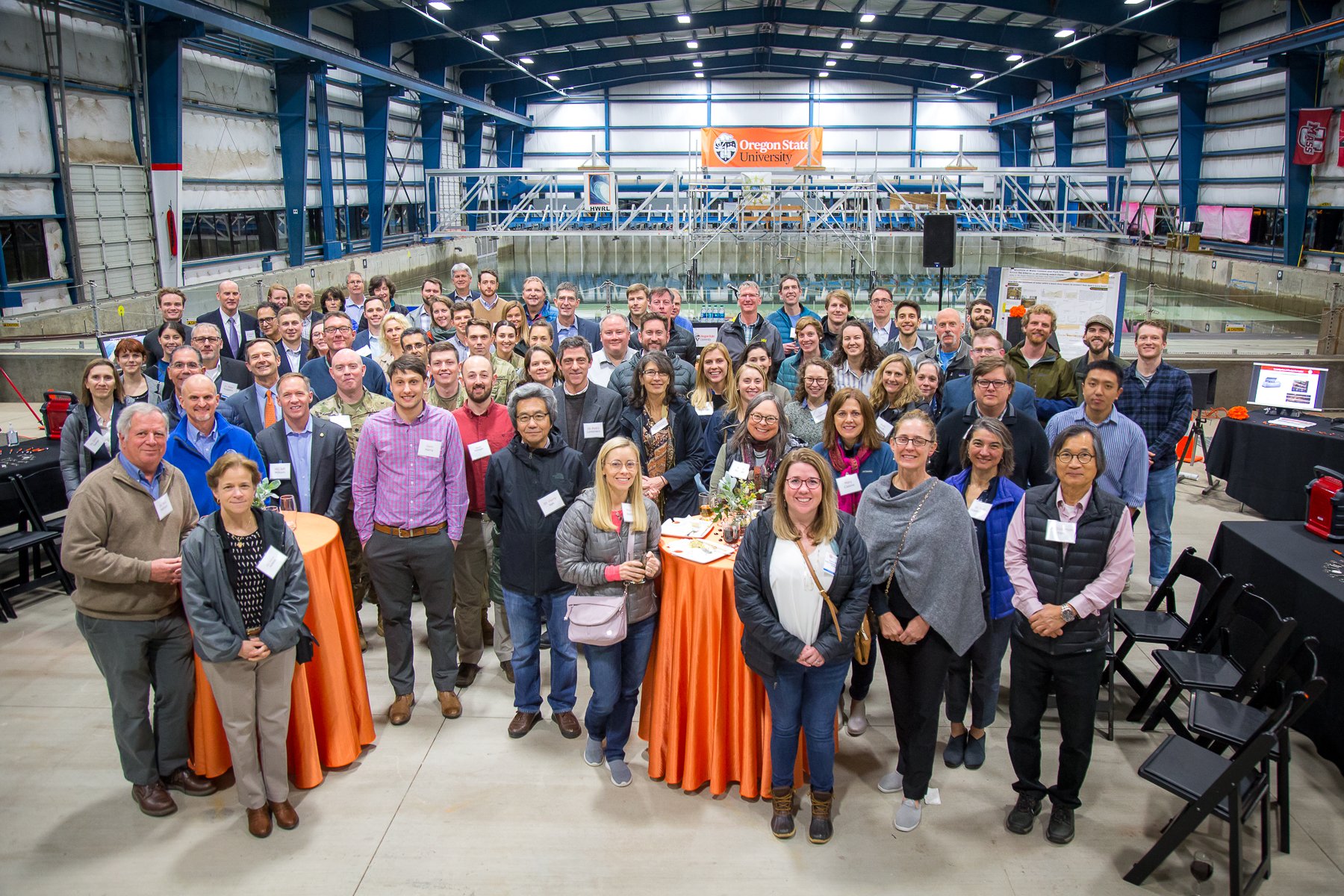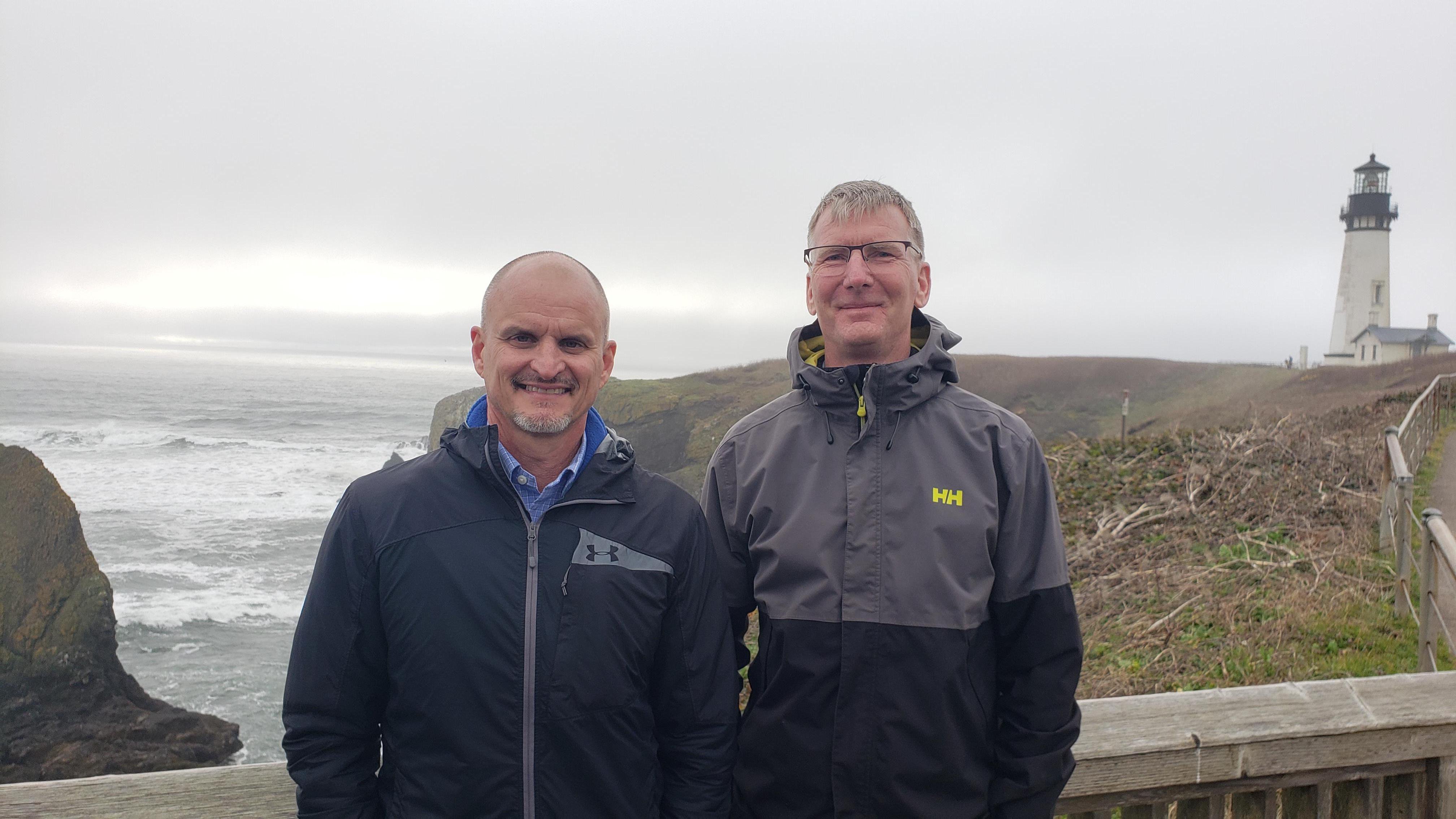NHERIs Oregon State University EF Hosts Prestigious CERB Group
Published on March 30, 2020

The NHERI at OSU facility hosted the CERB meeting in March, 2020.

Dan Cox (right) hosted a field trip to the Oregon coast for the Coastal Engineering Research Board of the US Army Corps of Engineers. Dr. Ty Wamsley (left) directs the U.S. Army Coastal and Hydraulics Laboratory at the Corps of the Engineering Research and Development Center (ERDC) in Vicksburg, Miss. He leads a team of engineers and scientists in executing an $85 million research program that provides cutting-edge science and technology solutions to our nation's most challenging water resources problems.
On March 3 and 4, 2020, Oregon State University hosted the executive session meeting for the Coastal Engineering Research Board, known as CERB, including a reception at the NHERI experimental facility to highlight cutting edge coastal engineering and science research.
CERB consists of Army Corps of Engineers senior officers and civilian engineers and scientists who are experts in the field of coastal engineering.
As well as providing broad policy guidance, CERB reviews plans and funding requirements for research projects in consonance with the needs of the coastal engineering field and the objectives of the U.S. Army Chief of Engineers.
At the Corvallis campus meeting, OSU and CERB leadership identified collaboration opportunities and discussed strategic research needed to address Pacific Northwest coast processes and coastal resilience.
The focus of the meeting was on the U.S. Army Corps of Engineers mission, says Dan Cox, principal investigator for the NHERI experimental facility. Attendees discussed numerous ways that NHERI at OSU could help the USACE achieve its goals, including employing OSU as a shared-use facility for coastal hazards research:
- For NSF-funded bio-cementation research;
- For NSF-funded research on surge/wave impact on coastal residential structures;
- For NSF-funded engineering with nature projects;
- For measurement technology, including remote sensing;
- For workforce development and REU-related programs; and
- For sediment-transport research related to DUNEX.
Many OSU faculty, students and administrators attended the meeting, demonstrating the universitys strong support for coastal-related research and education. Others contributing to the success of the visit included OSU's College of Earth, Ocean and Atmospheric Sciences and other research groups from OSU's College of Engineering. The event allowed the USACE to see many examples of NSF-funded projects through displays, posters and presentations.







